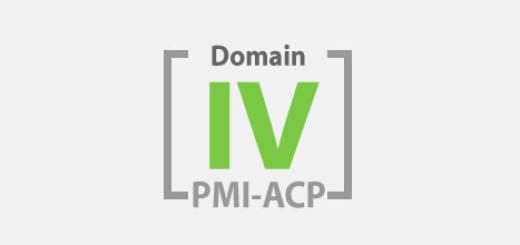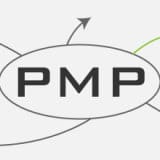PMI-ACP Tools and Techniques: Product Quality

[PMI-ACP® Exam Study Notes] Agile Product Quality is one of the ten Tools and Techniques for the PMI-ACP® exam. The “Tools and Techniques” accounts for a total of 50% of all the questions to be found on the exam paper. According to the PMI-ACP® exam content outline, Product Quality includes Frequent Validation and Verification (V&V), TDD – Test Driven Development, ATDD – Acceptance Test Driven Development, DoD – Definition of Done and Continuous Integration.
PMI-ACP® Exam Importance: around 3-6 questions (~5% of all questions)
PMI-ACP® Tools and Techniques: Product Quality
- these tools support the continuous improvement process of Agile development – a process to build in high quality from the beginning through validation and verification at every steps
- the highest quality is achieved through the “built-in quality assurance” of Agile processes right from the beginning
- reactive quality assurance: daily testing and automated testing
- pro-active quality assurance: face-to-face communication, pair programming, coding standards, testing “risky” features in early sprints
- Definition of Done (DoD)
- Done usually means the feature is 100% complete (including all the way from analysis, design, coding to user acceptance testing and delivery & documentation) and ready for production (shippable)
- Done for a feature: feature/backlog item completed
- Done for a sprint: work for a sprint completed
- Done for a release: features shippable
- The exact definition of done has been be agreed upon by the whole team (developer, product owner / customer, sponsor, etc.)
- The definition of done includes acceptance criterion and acceptable risks
- Done usually means the feature is 100% complete (including all the way from analysis, design, coding to user acceptance testing and delivery & documentation) and ready for production (shippable)
- Frequent Validation and Verification
- early and frequent testing both within and outside the development team to reduce the cost of quality (change or failure)
- validation: (usually external) the assurance that a product, service, or system meets the needs of the customer
- verification: (usually internal of team) the evaluation of whether or not a product, service, or system complies with a regulation, requirement, specification, or imposed condition
- Agile measure to ensure frequent validation and verification:
- testers are included in the development team from the beginning taking part in user requirements collection
- unit testings are created for continuous feedback for quality improvement and assurance
- automated testing tools are used allowing quick and robust testing
- examples: peer reviews, periodical code-reviews, refactoring, unit tests, automatic and manual testing
- feedback for various stages: team (daily) -> product owner (during sprint) -> stakeholders (each sprint) -> customers (each release)
- early and frequent testing both within and outside the development team to reduce the cost of quality (change or failure)
- Test Driven Development (TDD) – programming practice for developers for verification
- also broadly known as test-first development
- test cases (unit tests) are written before codes (i.e. think about the design first before coding)
- allow the coders to focus on the end results
- development driven by test cases (evolved from XP) to assure technical excellence and good design, write code unit all tests are passed
- codes written in this way are high-quality, maintainable and reliable
- the TDD processes:
- Red: write a failing unit test showing the intent of what the new code
- Green: write code to pass the test and add code to source repository
- Refactor / Clean: clean up the code (lean, mean and clear)
- rules of thumb for TDD:
- Don’t write any new code until a failing test is written
- Test everything that could “possibly” break
- Always improve by refactoring and do small chunks of refactoring frequently
- technical debts: compromises on code quality in order to meet the schedule
- refactoring is paying back technical debts
- Acceptance Test Driven Development (ATDD) – testing practice for the team for validation
- acceptance / functional tests are specifications for the desired behavior and functionality of a system (business requirements)
- before development begins, the development team discusses collaboratively (with product owner, customers, stakeholders) acceptance criteria to create a set of concrete acceptance tests (for each user story)
- help developers to build high-quality softwares fulfilling the business objectives reliably
- the ATDD processes:
- Discuss – discuss with customer to gather acceptance criteria
- Distill – get the acceptance tests ready
- Develop – code and hook up and run acceptance tests
- Demo – using automated acceptance scripts to run the tests in demos
- can make use of the Red, Green, Refactor model of TDD
- Continuous Integration
- continuously integrate changes and merge codes to the codebase (as soon as ready, maybe several times a day) so every developers can pull the latest version of code for development to avoid code conflicts and lower the cost of fixing errors
- the newly integrated codebase needs to go through testing (unit testing with automated testing tools and regression testing tools)
- continuous integration setup:
- A source code repository
- A check-out and check-in process
- An automated build (compiles codes, runs tests and deploys)
- Discipline to work in small chunks
- fixing a broken build is of top priority in continuous integration
- Continuous Improvement
- following Deming’s PDCA Cycle (plan – do – check -act)
- process improvement and self-assessment for improved product
- code refactoring
- pair programming
Summary: Agile Product Quality
This PMI-ACP® Exam Study notes touches upon one of the many tools and techniques of the PMI-ACP® exam syllabus – Agile Product Quality. Agile Product Quality includes Frequent Validation and Verification (V&V), TDD – Test Driven Development, ATDD – Acceptance Test Driven Development, DoD – Definition of Done and Continuous Integration.
Most Popular PMI-ACP Certification Articles
- Top 10 Tips to Prepare for the exam (I got all Proficient in my exam)
- How to Get 21 Contact Hours?
- Over 600+ FREE Quality Mock Exam / Practice Questions





 Hi, my name is Edward Chung, PMP, PMI-ACP®, ITIL® Foundation. Like most of us, I am a working professional pursuing career advancements through Certifications. As I am having a full-time job and a family with 3 kids, I need to pursue professional certifications in the most effective way (i.e. with the least amount of time). I share my exam tips here in the hope of helping fellow Certification aspirants!
Hi, my name is Edward Chung, PMP, PMI-ACP®, ITIL® Foundation. Like most of us, I am a working professional pursuing career advancements through Certifications. As I am having a full-time job and a family with 3 kids, I need to pursue professional certifications in the most effective way (i.e. with the least amount of time). I share my exam tips here in the hope of helping fellow Certification aspirants!





